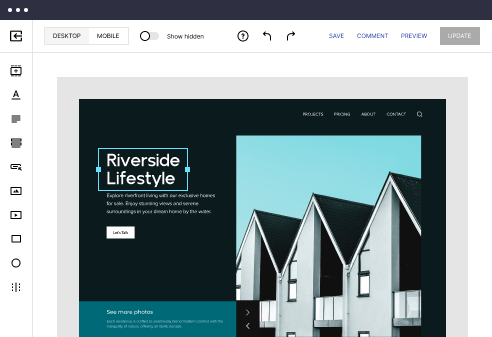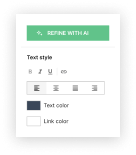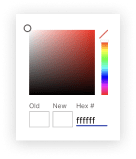
React.js optimized app showcase website template
Explore Similar TemplatesAbout template
Leverage our intuitive page builder and high-converting React.js optimized app showcase website template.
Recommended templates
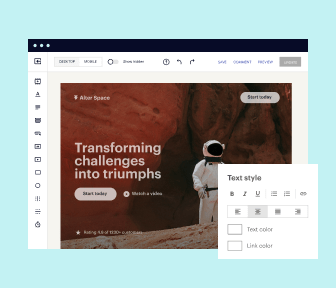
Easy to build without coding
With the intuitive drag-and-drop builder, anyone on your team can create high-converting pages without any knowledge of code or design. Make enhancements to your landing page with custom widgets using Javascript, HTML/CSS, or third-party scripts.
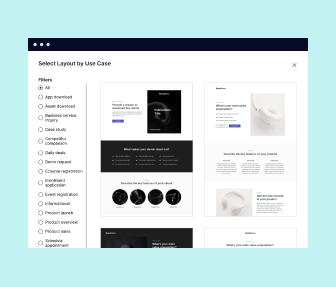
Multiple layouts for any industry and goal
Select from 500+ landing page layouts built to boost conversions across industry-specific scenarios. Customize them by adjusting fonts, adding images, and generating on-brand content with the AI assistant. Quickly scale with Instablocks® and Global Blocks that you can save, reuse, and update globally.
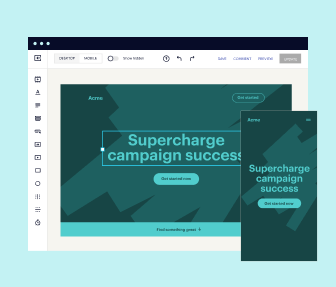
Loads fast and looks polished on any device
Every template is responsive, which means they present professionally on any device and load blazingly fast with our Thor Render Engine. You can also power them up with Google AMP technology to deliver an unparalleled mobile experience and drive higher conversions.
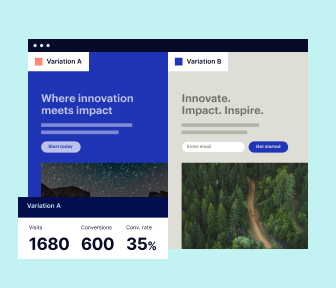
Robust analytics & experimentation
Get real-time updates and reporting across all your devices, showing the number of visitors, conversions, cost-per-visitor, and cost-per-lead. Launch AI-powered experiments, run A/B tests, and use heatmaps to analyze user behavior, then optimize your landing page to maximize conversions.
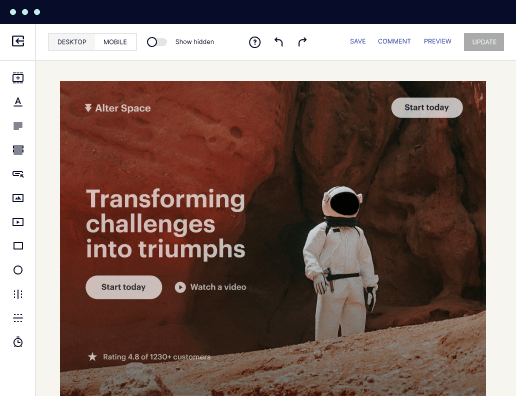
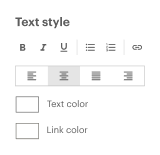
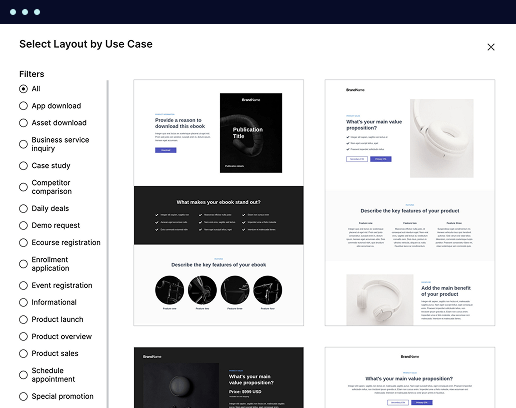
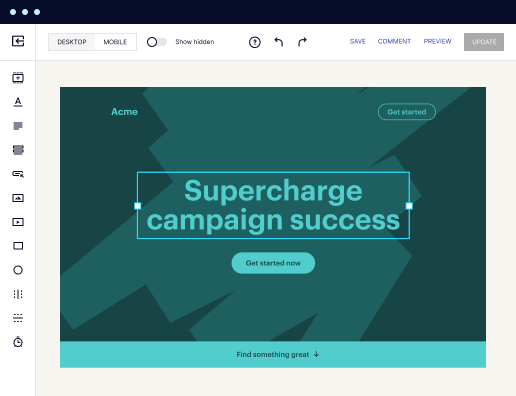
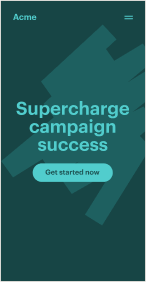
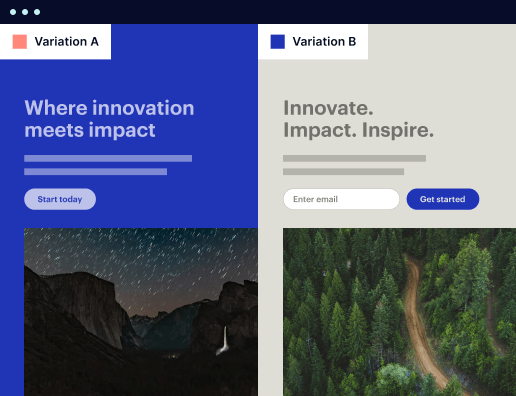
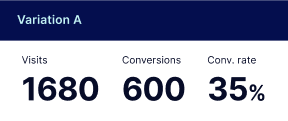
Easy to build without coding
With the intuitive drag-and-drop builder, anyone on your team can create high-converting pages without any knowledge of code or design. Make enhancements to your landing page with custom widgets using Javascript, HTML/CSS, or third-party scripts.
Multiple layouts for any industry and goal
Select from 500+ landing page layouts built to boost conversions across industry-specific scenarios. Customize them by adjusting fonts, adding images, and generating on-brand content with the AI assistant. Quickly scale with Instablocks® and Global Blocks that you can save, reuse, and update globally.
Loads fast and looks polished on any device
Every template is responsive, which means they present professionally on any device and load blazingly fast with our Thor Render Engine.
Robust analytics & experimentation
Get real-time updates and reporting across all your devices, showing the number of visitors, conversions, cost-per-visitor, and cost-per-lead. Launch AI-powered experiments, run A/B tests, and use heatmaps to analyze user behavior, then optimize your landing page to maximize conversions.
All the features you need to build lead-generating landing pages
Explore more featuresLearn how to build top-performing landing pages for any goal
FAQs
Leading the way in building high-performing landing pages





A powerful landing page and CRO platform for optimizing your marketing campaigns
Instapage stands as an all-in-one landing page and conversion rate optimization (CRO) platform, uniquely designed to empower marketers across diverse sectors such as business services, tech, education, and financial services. With its robust features and intuitive design, Instapage enables teams to rapidly create effective landing pages aimed at boosting campaign performance, enhancing user engagement, and maximizing ROI. This step-by-step guide will explore how to leverage Instapage for your digital marketing success.
Understanding Instapage
Instapage provides a flexible platform that simplifies the process of landing page creation. With over 100 high-converting templates and customizable elements, users can quickly build pages that resonate with their specific audience. This flexibility means that whether you're in the government sector, insurance, or utilities, you can tailor your content for optimal performance.
- User-friendly interface: The intuitive drag-and-drop functionality allows marketers to create compelling pages without needing extensive technical skills.
- Integration capabilities: Instapage integrates with various marketing tools, enabling seamless data flow and efficient campaign management.
- Comprehensive analytics: With real-time insights and performance tracking, users can make data-driven decisions to optimize their strategies.
Step 1: Choosing the Right Template
The selection of the appropriate template is crucial in ensuring that your landing page effectively captures leads. With options tailored for various industries, it's important to consider your specific target audience's preferences.
- Focus on conversion: Select templates designed for high engagement rates to enhance lead generation.
- Audience consideration: Choose designs that reflect your brand and resonate with the target demographic in your sector.
- Mobile optimization: Ensure that the templates you consider offer responsive designs to accommodate users on different devices.
Step 2: Implementing Optimization Features
Once your landing pages are live, employing optimization techniques is essential for maximizing conversions. Instapage offers built-in tools for A/B testing, heatmaps, and analytics insights, allowing for continual improvement.
- A/B testing: Experiment with different headlines or call-to-action buttons to determine which versions yield the best results.
- Heatmaps: Utilize this feature to analyze how users interact with your page, identifying areas for improvement.
- Detailed analytics: Regularly review performance metrics to refine your strategy and enhance overall effectiveness.
Step 3: Personalizing User Experiences
Personalization can dramatically improve engagement levels. By leveraging features such as dynamic text replacement, Instapage allows marketers to tailor experiences to their audience segments.
- Segment targeting: Create tailored messages for different demographics to improve resonance and interaction rates.
- Dynamic content: Use dynamic elements to adjust the page content based on user behavior and preferences.
- AdMaps integration: Link specific ads to unique landing pages for coherent messaging and enhanced user experience.
By following these steps, you can effectively utilize Instapage to create high-performing landing pages tailored for your digital campaigns in various sectors.
Ready to transform your marketing strategies? Explore the capabilities of Instapage today and start maximizing your ROI with powerful landing pages!
ReactJS optimized app showcase website template: A comprehensive guide
Unveiling ReactJS: The backbone of modern web development
ReactJS has emerged as a pivotal technology in the realm of web development. Its ability to create dynamic and interactive user interfaces makes it a go-to solution for many developers and businesses alike. This article explores the attributes that have propelled ReactJS into the spotlight, especially in the context of app showcase website templates.
What makes ReactJS stand out?
At its core, ReactJS is distinguished by its implementation of the Virtual DOM, which enhances user experiences by significantly improving performance. Instead of manipulating the actual DOM directly, ReactJS utilizes a virtual representation of the UI that allows changes to be made in memory before rendering the updates. This results in optimized performance, especially in applications with high user interactions.
Additionally, ReactJS boasts a component-based architecture. This means that developers can build encapsulated components that manage their state independently. Such an approach not only promotes reusability but also simplifies the maintenance of complex applications, ensuring an efficient workflow from design to deployment.
The rise of ReactJS in landing page development
The seamless integration capabilities of ReactJS with various tools and libraries have made it a preferred choice for landing page development. Businesses appreciate the flexibility ReactJS offers, empowering developers to create tailored solutions that meet specific marketing goals efficiently.
Robust community support and resources.
Vast library of third-party tools and plugins.
Adaptability for various business models and industries.
The essence of an optimized app showcase website template
An app showcase template plays a crucial role in demonstrating the capabilities of software products, especially in capturing user interest right from the landing page. The primary purpose of these templates is to provide a streamlined layout that effectively highlights features, benefits, and case studies, which are vital for converting visitors into users or customers.
Key traits of an effective showcase template include a clean design, responsive layout, intuitive navigation, and high-quality visuals. A seamless user experience can significantly enhance user engagement and foster trust. Ultimately, an optimized app showcase template serves as a powerful marketing tool, allowing businesses to effectively communicate their value proposition.
Unique features of a ReactJS app showcase template
Using ReactJS for app showcase templates introduces unique features such as real-time rendering and enhanced interactivity. This capability allows developers to create applications that respond instantly to user actions, providing a fluid experience. Another compelling aspect is customization; React components can be tailored for various industries, allowing businesses to maintain their branding while optimizing performance.
Core components of a ReactJS optimized app showcase template
Every effective app showcase template should incorporate essential components for optimal performance and user engagement. The header and navigation bar are crucial for providing access links to different sections of the application, enhancing user experience during their exploration of the website.
Header with logo and clear navigation links.
Showcase sections displaying products or services through grids or carousels.
Testimonials or case studies for social proof.
To enhance user experience further, advanced features such as dynamic content loading and attractive animation and transition effects are crucial. These features can significantly improve interaction by keeping users engaged and reducing bounce rates, ultimately leading to higher conversion rates.
Crafting landing pages with impact: Key considerations
Understanding your target audience is foundational for crafting effective landing pages. Creating user personas based on demographics, preferences, and pain points can help shape content that resonates. Additionally, analyzing user behavior through tools and insights can refine strategies, ensuring that content and design meet audience expectations.
Once the audience is identified, businesses can tailor their value propositions. Highlighting unique selling points (USPs) can significantly improve user engagement. Emotional triggers can engage visitors on a personal level, making persuasive copywriting a vital part of the process. Effective storytelling through concise and relatable content has the power to retain attention and prompt additional actions.
Personalization and customization: Flexibility for developers
One of the standout features of ReactJS is its modular component structure, enabling developers to customize experiences effortlessly. This modularity not only allows for easy modifications but also fosters reusability, making it possible for elements to be applied across different projects without starting from scratch.
Building a design system is vital for maintaining consistency and branding across an application. Developers can integrate custom styles and branding seamlessly, supported by tools that facilitate the creation of color palettes and typography choices. This level of customization ensures that the final product aligns closely with business identity and marketing goals.
Optimizing performance for sales and user flow
To maximize the effectiveness of an app showcase template, implementing best practices for fast loading times is critical. Techniques such as code splitting allow sections of the app to load only when required, significantly enhancing performance. Lazy loading images can further minimize load times, contributing to a smoother user experience.
Additionally, the layout's strategic design plays a crucial role in enhancing user flow. Call-to-action placements should be visible and contextually relevant, leading the user through the desired journey. Conducting A/B testing can provide insights into which layouts and placements yield the highest conversion rates, making this approach invaluable for ongoing optimization.
Integrating effective marketing tools
In today's competitive landscape, integrating key marketing tools is essential for success. Email subscription services and CRM tools can help businesses manage leads and maintain communication with potential customers. Moreover, incorporating analytics tools enables data-driven decisions, guiding optimizations based on user interactions.
Social proof is another critical factor that influences customer decisions. Showcasing user testimonials and case studies provides evidence of a product's effectiveness. Furthermore, implementing a star rating system or reviews on the template adds credibility, encouraging potential users to engage with the offering.
Future trends in ReactJS app showcase templates
As technology continues to evolve, the role of AI and automation within web development is becoming increasingly significant. AI-driven features such as predictive analytics can enhance user experiences by anticipating needs based on interactions. Additionally, chatbots integrated into app showcases can provide real-time support, further bridging the gap between users and developers.
Keeping abreast of upcoming practices is crucial for developers. Progressive web apps (PWAs) are gaining traction, allowing React applications to provide native app-like experiences to users. Further emphasis on accessibility and inclusivity features is essential, ensuring that applications can cater to a wider audience.
Real-world applications: Success stories using ReactJS templates
Examining case studies can reveal how various industries leverage ReactJS app showcase templates for success. In the e-commerce sector, optimized landing pages play a significant role in driving sales by appealing to customer preferences and behaviors. Platforms utilizing ReactJS can exhibit products attractively while ensuring swift navigation.
Software as a Service (SaaS) companies also find value through these templates. By effectively showcasing their projects, they increase user conversions and encourage trial sign-ups. Learning from developer experiences in deploying these templates can highlight common pitfalls and foster innovations that can emerge from the use of ReactJS in real-world applications.
Responding to developer needs: Best practices for project setup
When embarking on a new project involving ReactJS templates, organizing the project efficiently is essential. Adopting a clear folder structure can simplify code management, making it easier to locate components, assets, and styles. Establishing a robust build process is equally important, ensuring that development workflows remain smooth and maintain high-quality outputs.
Implementing version control methods, such as Git, facilitates collaboration and allows for tracking changes effectively. Access to community support and resources can significantly enhance the development process. Engaging with React communities offers opportunities for ongoing learning and discovering library shortcuts to speed up development times.
Exploring sale opportunities for high-performance templates
For developers and businesses keen on selling ReactJS templates, understanding marketing strategies is crucial. Platforms such as ThemeForest and GitHub serve as excellent venues for showcasing and selling these templates, allowing for increased visibility. Additionally, adopting engaging content marketing approaches can capture potential buyers' attention effectively.
Evaluating pricing models is essential to maximize revenue while providing value. Creating tiered offerings can cater to diverse user needs and budgets. Leveraging customer feedback can guide improvements, ensuring that templates evolve according to market demands and user expectations.
The aesthetic edge: Building attractive landing pages
Design principles play a vital role in crafting attractive landing pages. Emphasizing whitespace and balance in layouts can enhance readability and user engagement. Additionally, applying color theory judiciously can evoke desired emotional responses and guide user actions effectively.
Integration of visuals and multimedia significantly contributes to engagement. For instance, incorporating videos and high-quality images can convey brand narratives compellingly. Storytelling through visuals serves to resonate with potential customers, making the app showcase more memorable.
Ready to skyrocket conversions?
Supercharge your ad campaigns with high-performing landing pages
Get started